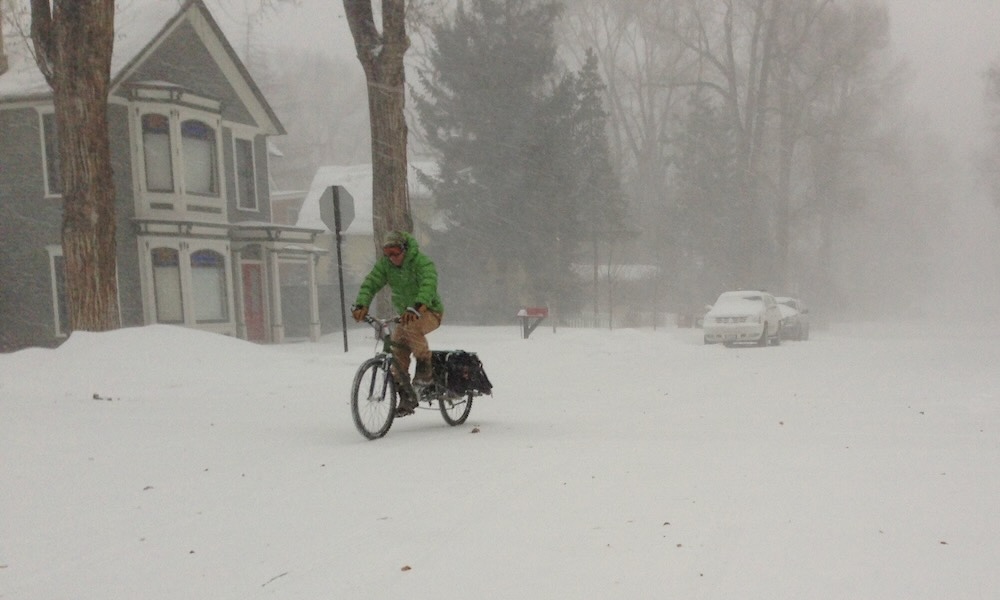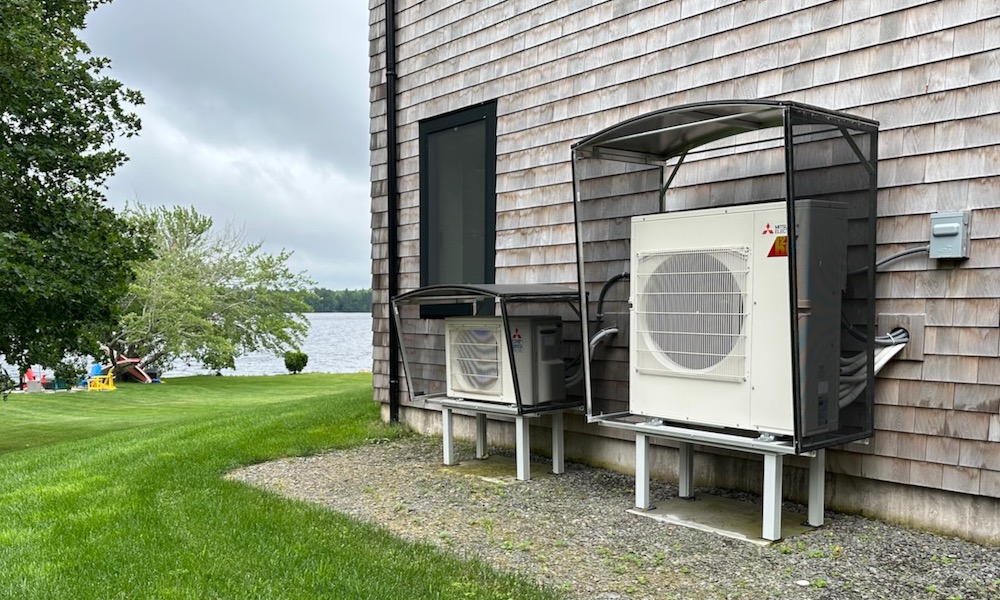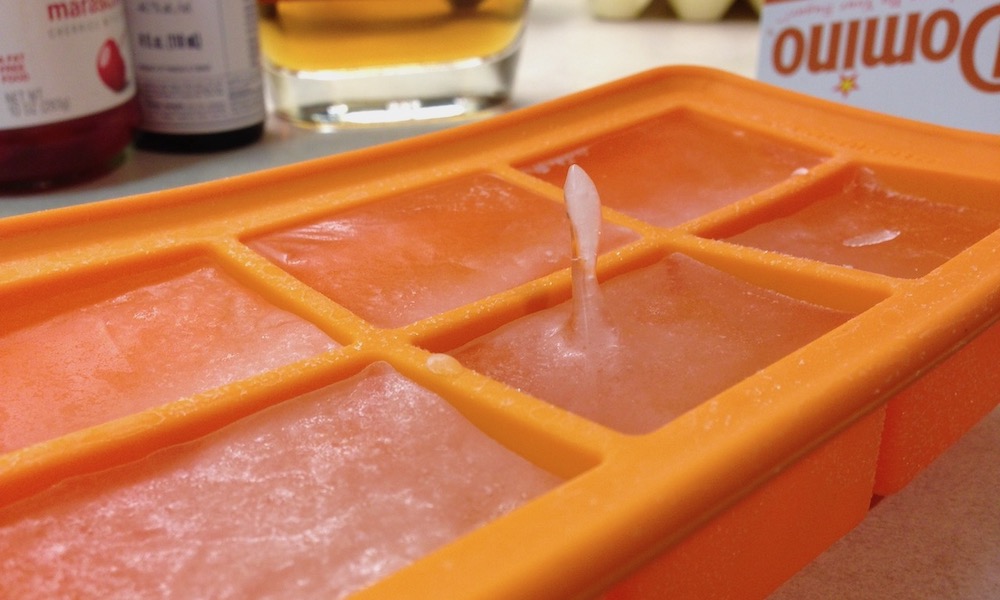How a Heat Pump Gets Heat From Cold Air, Part 2

Everyone’s talking about heat pumps. These machines for heating buildings can exchange heat with the outdoors in multiple ways, of course. Ground-coupled heat pumps pull heat out of the ground or water and send it to heat the building. But most heat pumps are of the air-coupled variety. In winter, they pull heat from the outdoor air and send it inside. And this is where a great many people ask, how the heck do heat pumps get heat out of cold air?
That last link goes to my first article on this topic, which I wrote in 2010. It’s still valid, but today I want to approach this question a bit differently. I’m not going to talk about the refrigeration cycle or the second law of thermodynamics. Instead, let me start with what the real question usually is.
The question behind the question
When someone asks how a heat pump can pull heat out of cold air, there’s often another question behind it that’s really what they want to know. Drew Tozer mentioned this in a LinkedIn post this week. He said he usually doesn’t answer the above question because:
What they’re usually trying to say is “Someone told me that heat pumps don’t work when it’s cold. Is that true? Am I going to regret buying one?”

Drew lives in Ontario, and this is becoming a big deal there because Canada is going nuts with heat pumps, just as we are here in the US. When I drove through Nova Scotia this past summer, I saw heat pumps all over the place. Yes, even out in the rural areas. The photo above is one of those homes.
So, let’s begin there.
The answer is in your kitchen
You have a device in your kitchen that’s already providing the answer to that question. A refrigerator works on the same principle and technology as an air-coupled heat pump. Unlike a heat pump for space heating, though, a refrigerator works in only one direction. It always removes heat from the fridge whereas a heat pump can move heat from outdoors to indoors in winter and then reverse the flow to move heat from indoors to outdoors in summer.

How does this show that a heat pump can pull heat out of cold air? Because your fridge is constantly pulling heat out of both the refrigerator and freezer portions of your fridge. In fact, it pulls enough heat out of the freezer to keep the temperature there at about 0 °F (-18 °C). That’s more than enough heat removal to freeze water into ice. (Wondering about that photo? I wrote about the reason the ice spike forms a while back.)
Believe it now?
Arbitrary temperature scales
OK, maybe you remain skeptical. Let me give you another reason not to worry about the capability of heat pumps to remove heat from cold air. When we talk about temperature in our daily lives, we use either the Fahrenheit or Celsius temperature scales. They’re great for giving us numbers we can assign to different levels of thermal activity. But they’re arbitrary.
Daniel Fahrenheit chose the zero on his scale following the lead of Ole Roemer. Roemer chose his zero because he didn’t want to record any negative temperatures, and the temperature that now equates to 0 °F was about as cold as it ever got in Denmark in his day. (Excellent article on that here.)
Anders Celsius chose the zero of his scale to be the freezing point of water. That’s useful, but still arbitrary.
The absolute answer
In contrast, Lord Kelvin developed the absolute temperature scale with zero being the lowest possible temperature, also called absolute zero. And that, dear reader, is how we can clear up this confusion once and for all. How, you ask? Because the thermal energy in air is proportional to the absolute temperature.
Knowing that, we can do a bit of math here to show how much less heat is in really cold air versus room temperature air. Let’s say those temperatures are 0 °F (-18 °C) and 70 °F (21 °C). The Kelvin equivalents are 255 K and 294 K. The difference in temperature here is 39 K. And that means there’s only a 13 percent drop in thermal energy as the air goes from 70 °F down to 0 °F.*
In other words, when it’s really cold outdoors, the outdoor air still has 85 to 90 percent as much heat available as the nice cozy indoor air.
The crux
I know not everyone finds these details as interesting as I do. But on the issue of the physics and the engineering behind heat pumps and their ability to heat your home in winter, the short answer is that you don’t need to worry. They not only can do it, but they ARE doing it. I showed that in my article about Gary Nelson’s house in Minnesota. And I showed the data for my own house in Atlanta when we had really cold weather a year ago.
So, yes, heat pumps can and do work in cold weather. Do some heat pumps struggle? Yes, and the reasons vary. It could be poor design, faulty equipment, bad distribution, or any number of other problems. But it’s not because heat pumps don’t work when it’s cold. Because that they certainly do!
Allison A. Bailes III, PhD is a speaker, writer, building science consultant, and the founder of Energy Vanguard in Decatur, Georgia. He has a doctorate in physics and is the author of a bestselling book on building science. He also writes the Energy Vanguard Blog. For more updates, you can subscribe to Energy Vanguard’s weekly newsletter and follow him on LinkedIn.
* The calculation here is (294 K – 255 K) / 294 K = 0.13 = 13%.
Related Articles
How the Heck Does a Heat Pump Get Heat from Cold?!
Can a Heat Pump Work in Minnesota?
My Undersized Heat Pump in an Arctic Blast
Comments are welcome and moderated. Your comment will appear below after approval.
This Post Has 20 Comments
Comments are closed.

Some heat pumps now are marketed as “cold climate” models. I live in Dallas, Texas which is not designated as such, but why not use a cold climate heat pump in the South? Pro’s & con’s?
I think it comes down to the efficiency of the system at different exterior temps. Obviously there are a ton of variables here, but generally, a cold climate heat pump will be less efficient for cooling than a standard heat pump would. It may even be less efficient than a standard system at slightly higher cold temps (say 30°F).
My cold climate heat pump (operating in Montana) was also a bit more expensive than a standard system. Not exactly sure why.
The design of conventional heat pumps is pretty well suited for Dallas. A cold-climate heat pump would likely cost more and probably have lower overall efficiency in Dallas since it is designed around colder temperatures than you normally get there.
Heat stripes in the Air Handler
Why do COP’s drop much more than 13% over that same temperature range?
The follow-up question on people’s mind is “how much extra is this going to cost me?” – in which case the COP of the heat-pump at a given temperature becomes useful. Heat-Pumps and Solar PV go together which becomes a really interesting physics/engineering problem.
Heat pumps and solar PV are not necessarily a good combination. Solar peaks when heating loads are the lowest and solar is non-existent when heating loads are the highest. Batteries can be used to put this in synch, but now you have really spent a lot of money.
But in a cooling dominated climate solar peak matches cooling peak or at least get a start on providing nighttime cooling.
Re heat pump hot water heaters. Where should they be located and where should they not be located.
I see lots of encouragement to convert to heat pump water heater without considering their location.
Quite possibly you have covered this in a previous article. Please let me know.
Warm regards, Alan Crymes
In cooling dominated climates they should be located in a garage. This is very common in Florida.
Basement would be the “worst” place. Worst as in not ideal.
Large utility room on a living floor but these units have been known to have noise complaints so YMMV.
In a warming dominated climate I would probably skip it unless you have a quiet room in a conditioned area of the home. Just remember that some of the heat generated to warm the house will be used to heat the hot water heater so there’s a small conflict there where you’re paying twice to heat your water ($$ to heat the house, $$ to pull that heat from the house into the water tank).
My two cents.
The question home owners ask, in my experience, is whether a heat pump is cost effective. On cold
days the hp runs for long periods, using expensive electricity. I looked at my electric bill a few days ago. We are at $0.34/KWh in MA. Assuming a properly sized, zoned and charged hp, how doe one make the comparison?
if the cost of gas ($/therm)/29.3 is greater than ($/kWh) / COP, you should go with a heat pump otherwise use gas. COP is how much heat you get per unit of input.
1 therm of gas = 29.3 kWh. Not sure why we’re still using British imperial units.
Note that a forced air furnace uses about .4 kWh for the fan in addition, and it’s not included above.
My modulating, inverter heat pump has kept the indoors at 72° when the outdoor temperature was 15° in Ohio. It even recovered from the 3° setback we use for comfort at night. We have not experienced any cool air from defrost cycles, in spite of the the fact that I have the furnace locked out. I am waiting for even colder weather so I can find the point at which the heat pump cannot hold temperature indoors. Of course, it is important to air seal the house as much as possible to prevent energy loss as well as to eliminate drafts and cold spots.
If someone could explain the Performance Requirements for DOE’s Residential Cold-Climate Heat Pump technology challenge, that would be a good deed for humanity. For example, what is
“Capacity ratio of 100% for 5°F
capacity to 47°F capacity”?
“Minimum turndown ratio at 47°F”?
“Compressor cut-in and cut-out
temperatures”?
Never understood why the media keeps pushing the “what is a heat pump” thing. It’s an air conditioner in reverse end of story.
I’m in DFW and for conventional split systems they were starting to get popular with installers/builders in the 90s. However…. Back then they were pretty much junk. they never lived up to their hype and they had many reliability issues with boards going bad and reversing valves having to be replaced and they were big clunky solder jobs.
Today though they are far better. Nowhere near the efficiency of a minisplit unless you spend 10X the price of a minisplit to get it better. Today I don’t mind them and I like the split systems that use minisplit style condensers vs the US design giant noise boxes.
When I installed our HVAC I put in a gas furnace as gas was the cheapest to heat with at the time. But the coil I used can be run with a heat pump condenser with a different expansion valve. Now today I would like to swap out the regular condenser for a heat pump and move it to the side of the house vs the back yard so the back yard is quieter. And also the newer scrolls are quieter and have les vibration than the ones from a couple years ago. Many scroll compressors have an issue where they impart a vibration through the lineset. There are bandaids like flexible linesets at the condenser but I’d rather swap it all out at some point since now a heat pump is cheaper to run than gas but I still have the gas backup.
Always have a backup source of heat and cooling for your house. Never depend on one system. It often can take a week to get a programmed board from Trane. Do you want to wait that long without HVAC…
I also have a 1 ton Minisplit in my shop. It’s to supplement the 2 ton window unit in the summer. Over time the window unit will be replaced with another minisplit. Heating so far it’s wonderful and very cheap to operate. We will see how it does this weekend when it’s down to 7*.
A heat pump is actually the reverse of a heat engine. A heat engine uses the difference in temperature to generate work. A heat pump uses a motor to move heat in the opposite direction. The ideal Carnot cycle is reversible!
Excellent idea to use Kelvin degree measure to help understand a heat pump.
I would be interested to know how heat pump efficiency varies with the delta T from room temperature. Also at what outside temperature is a heat pump simply not practical, either because it would need to be excessively large or so inefficient that it consumes enough electricity to negate its advantages.
Heat stripes in the Air Handler and a reversing valve in the condenser
Defrosting is an issue that most heat pump owners will have to deal with yet it is poorly understood and rarely talked about. Reading through blogs I often see complaints about defrost issues especially with the new variable capacity units. I recently installed a Senville minisplit and was surprised to see that its defrosting strategy was just incredibly bad. Because I monitor the performance I can see when it defrosts and for how long. Below about -2C for instance it defrosts EVERY 100 minutes which includes running the 150 watt pan heater for 20 minutes! Note that with most of these cycles the coil is completely frost-free and there is no gain in efficiency Why don’t they test heat pumps at 0C/100%RH? That would be interesting.
The minisplit I have in my shop does about a 10 minute or so defrost cycle. The nice part is that it’s a hot gas defrost so no cold air is blown inside. Mine is a Zokop which is also sold as Traiden and many other brands. It’s a 19 seer unit.
I need to look at it again but I think there is a way I can either disable the defrost or lengthen the time between them. It kept the shop at 65* in the 14* nights and warmer during the day when I was working out there. (that was before I found the low temp heat mode) There has never ever been any sign of ice of any amount at all on the fins. A little on the fan but not on the fins.
The issue with conventional US built systems is that they don’t use hot gas but revert to AC mode.